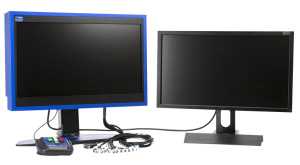

Context sentences were presented in full, followed by word-by-word presentation (300 ms SOA) of target sentences. Target word frequency (low, high) and its predictability from prior context (low, high) were manipulated across two-sentence passages. research into written language comprehension has been equivocal as to whether word frequency and contextual predictability effects share an early time course of processing. Routine versus extended outpatient EEG: Too short, too long, or just right? /pmc/articles/PMC5106098/

The inventor of electroencephalography (EEG): Hans Berger (1873–1941). encyclopedia/content.aspx?contenttypeid=92&contentid=P07655 Electroencephalography (EEG): An introductory text and atlas of normal and abnormal findings in adults, children, and infants. You can learn more about how we ensure our content is accurate and current by reading our editorial policy. Healthline has strict sourcing guidelines and relies on peer-reviewed studies, academic research institutions, and medical associations. Be sure to speak up if there’s anything about your results that you don’t understand. Before you review the results, it may be helpful to write down any questions you might want to ask. It’s very important to discuss your test results with your doctor. dead tissue due to a blockage of blood flow.The EEG will show if the frequency of waves or patterns is normal. For example, the wave patterns move faster when you’re awake than when you’re asleep. Different levels of consciousness, like sleeping and waking, have a specific range of frequencies of waves per second that are considered normal. Normal resultsĮlectrical activity in the brain appears in an EEG as a pattern of waves. Your doctor may schedule an appointment to go over the test results with you. However, it does not always show past abnormalities related to a seizure.Ī neurologist (someone who specializes in nervous system disorders) interprets the recordings from the EEG and then sends the results to your doctor. The EEG may show abnormalities even if the seizure does not occur during the test. These EEGs use video to capture seizure activity. In some instances, a person may undergo a 24-hour EEG. They may ask you to lie still, close your eyes, breathe deeply, or look at stimuli (such as a flashing light or a picture).ĭuring the test, very little electricity passes between the electrodes and your skin, so you’ll feel very little to no discomfort. The technician may instruct you to do certain things while the test is in progress.This machine converts the electrical impulses into visual patterns that appear on a screen. Once the test begins, the electrodes send electrical impulse data from your brain to the recording machine.The technician will put a sticky gel adhesive on 16 to 25 electrodes and attach them to spots on your scalp.These spots are scrubbed with a special cream that helps the electrodes get a high-quality reading. A technician will measure your head and mark where to place the electrodes.You’ll lie down on your back in a reclining chair or on a bed.The test usually takes roughly 30 to 60 minutes to complete and involves the following steps: Specialized technicians administer EEGs at hospitals, doctor’s offices, and laboratories. The electrodes transfer information from your brain to a machine that measures and records the data. An electrode is a conductor through which an electric current enters or leaves. Other factors that can influence your EEG reading include:Īn EEG measures the electrical impulses in your brain by using several electrodes attached to your scalp. The person responsible for interpreting your EEG will take these movements into account. Several types of movements can potentially cause “artifacts” on an EEG recording that mimic brain waves. Factors that could interfere with an EEG reading Some people may not be able to hyperventilate safely, such as people with a history of stroke, asthma, or sickle cell anemia. Hyperventilation is also commonly induced during an EEG to produce abnormalities. The technician performing the EEG is trained to safely manage any situation that might occur. When someone has epilepsy or another seizure disorder, there’s a small risk that the stimuli presented during the test (such as a flashing light) may cause a seizure. If an EEG does not produce any abnormalities, stimuli such as strobe lights, or rapid breathing may be added to help induce any abnormalities.


 0 kommentar(er)
0 kommentar(er)
